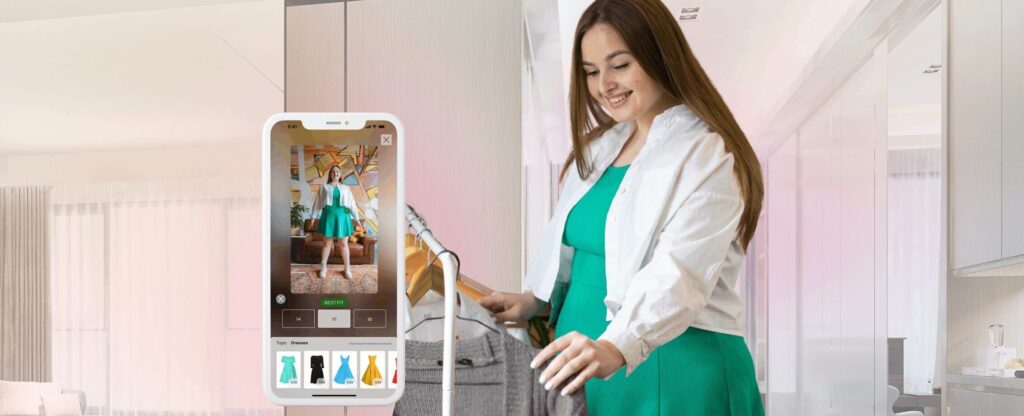Connected Virtual Dressing Rooms leverage advanced technologies like artificial intelligence (AI) and virtual reality (VR) to transform the online shopping experience. These systems allow customers to virtually try on clothing and visualize fashion items in a digital environment, enhancing convenience and reducing the uncertainty associated with online purchases.
How Connected Virtual Dressing Rooms Work
Virtual dressing rooms utilize a combination of AI, augmented reality (AR), and 3D modeling to create a realistic representation of how clothing will fit and look on a customer. The process typically involves the following steps:
-
Body Scanning: Customers can use their smartphones or webcams to scan their bodies, creating a 360-degree 3D model. This model captures precise body measurements and contours, which are essential for accurate fitting[1][3].
-
Garment Overlay: Once the digital avatar is created, clothing items can be overlaid on this model. The virtual fitting room uses AR to simulate how the garment will fit, allowing customers to see details like drape, fit, and style without physically trying on the clothes[2][4].
-
Real-Time Interaction: Users can interact with the virtual environment, adjusting the fit and style of the clothing in real-time. This interactive experience enhances customer engagement and satisfaction, making online shopping more enjoyable[3][4].
Benefits of Connected Virtual Dressing Rooms
The adoption of virtual dressing rooms offers several advantages for both consumers and retailers:
-
Enhanced Shopping Experience: Customers can try on multiple outfits from the comfort of their homes, eliminating the need for crowded fitting rooms and long queues. This convenience is particularly appealing to younger shoppers, with a significant percentage expressing a desire for such technology in retail environments[2][4].
-
Reduced Returns: One of the major challenges in online shopping is the high return rate due to sizing issues. Virtual fitting rooms help mitigate this problem by providing a more accurate representation of how clothes will fit, leading to increased customer confidence and reduced return rates[1][3].
-
Data Insights: Retailers can gather valuable data from virtual fitting room interactions, allowing them to better understand customer preferences and improve inventory management. This data-driven approach can enhance marketing strategies and product development[2][3].
Devices and Technologies Involved
Connected virtual dressing rooms can be accessed through various devices, including:
-
Smartphones and Tablets: Most virtual fitting room applications are designed for mobile devices, allowing users to easily scan their bodies and try on clothes virtually.
-
VR Headsets: For a more immersive experience, some retailers are exploring the use of VR headsets, enabling customers to step into a fully virtual environment where they can interact with clothing items[3][4].
-
Smart Mirrors: In physical retail settings, smart mirrors equipped with AR technology allow customers to see how clothes look on them without needing to change outfits physically[1][2].
As the technology continues to evolve, connected virtual dressing rooms are set to become a staple in the retail industry, offering a seamless blend of physical and digital shopping experiences.
Further Reading
1. What Are Virtual Fitting Rooms and How Do They Work? (2024) – Shopify
2. Virtual Fitting Room For eCommerce: Retail’s Best Way Forward
3. Smart Shopping With AI Virtual Fitting Room Technology
4. Virtual Fitting Rooms Explained: A Guide for Retailers
5. Google’s generative AI is improving virtual fitting rooms


